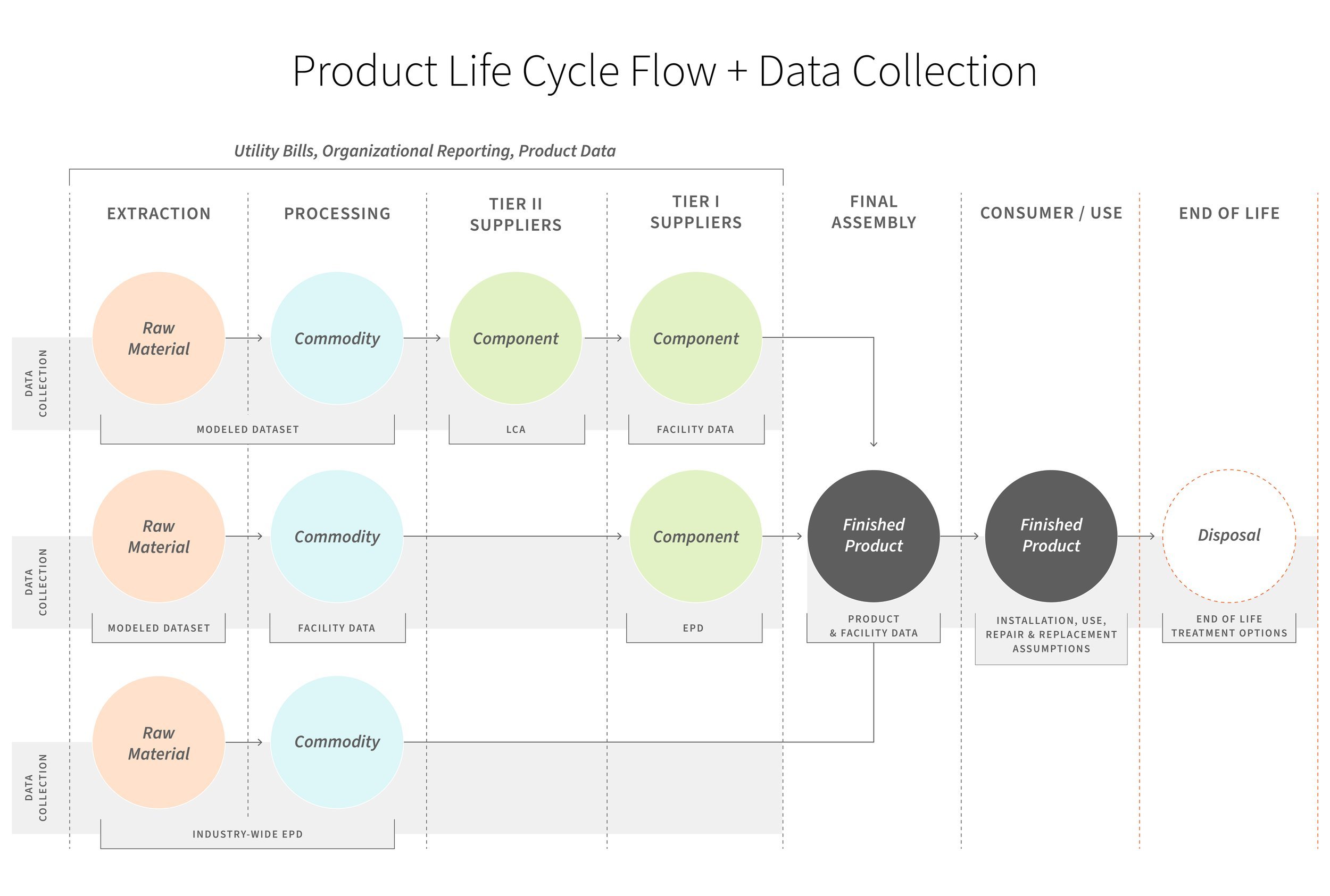Do You Know the Carbon Impact of Your Product?
There is growing pressure from consumers, suppliers, and policymakers on companies to disclose the carbon impact and chemical composition of their products. Product carbon (often referred to as embedded carbon) is the total amount of carbon emitted to make your product. Here’s how to measure the amount of carbon in your product and what you can do with that information to reduce the carbon footprint.
Steps to Determine Product Carbon:
Map out the life of your product.
There are three categories of products: commodities, components, and finished products. Each of these categories starts and stops somewhere. Mapping out the evolution of your product identifies each of the raw materials and components associated with your product. From there, you can determine each step in your supply chain and what types of data you will need. In addition, to tiering out your suppliers, you’ll want to consider your product’s end of life.
Collect data from your supply chain.
Depending on whether suppliers are providing a commodity or component, you’ll need to gather different types of data from energy data to Life Cycle Assessment information. Primary data is preferred, but normalized datasets can be used when primary data is unavailable. Higher percentages of primary data will result in a more accurate final calculation.
Aggregate data and calculate the carbon impact.
Once you have gathered your primary data and supplemented, when necessary, with normalized datasets, you can aggregate this data. When finished, this step will provide you with a final emissions amount per product.
What can you do with this data?
Design for Impact
With this data, you can make carbon-informed decisions in the product design phase by choosing less carbon-intensive materials. Materials greatly vary in their carbon intensity and small swaps in a product design can have a big impact. These decisions are nuanced, however, as short-term carbon saving measures may have a long-term impact on durability, recyclability, or end of life.
Pursue an Environmental Product Disclosure (EPD)
Completing the exercise of determining embodied carbon is often referred to as a Life Cycle Assessment. This assessment can be used to pursue an EPD. EPDs are third-party verified disclosures about the impact of your products and can be used to validate your product in pursuit of a standard, share with your supply chain, or meet regulatory requirements.
Achieve a Product Certification
Product certifications highlight sustainable attributes about your product, making it easier for your customers to find products that align with their values and goals. Product certifications can vary widely between industries, so it’s important to consider what certifications or standards would be most relevant to your stakeholders. Certifications can be either single-attribute or multi-attribute and each contain unique parameters and requirements.
Keep in mind…
While carbon is an important metric to track, it isn’t the only indicator of a “healthy” product. Product designers should consider the impact of their product on water, waste, reuse, and end of life. An important first step is determining a baseline for your product. From there, the sky’s the limit on the improvements you can make!
Interested in a deeper dive? Check out our Webinar Archive for the May Forum entitled How to Decarbonize Your Products.


